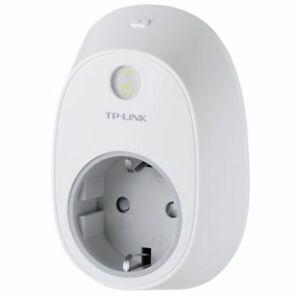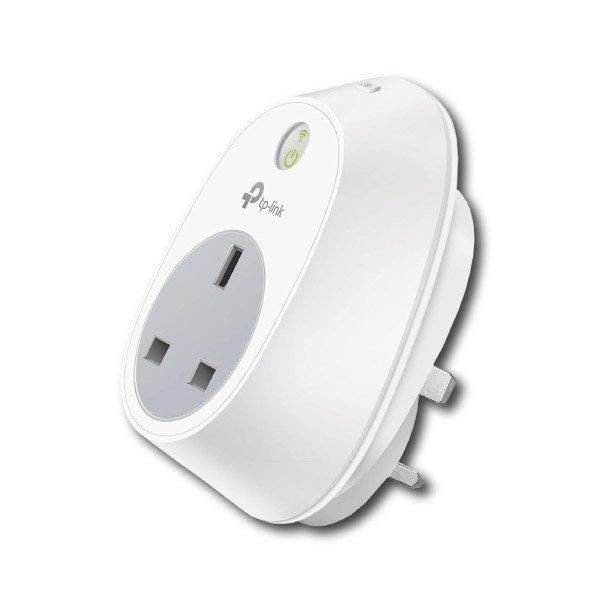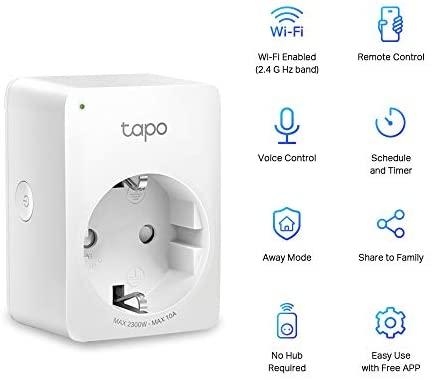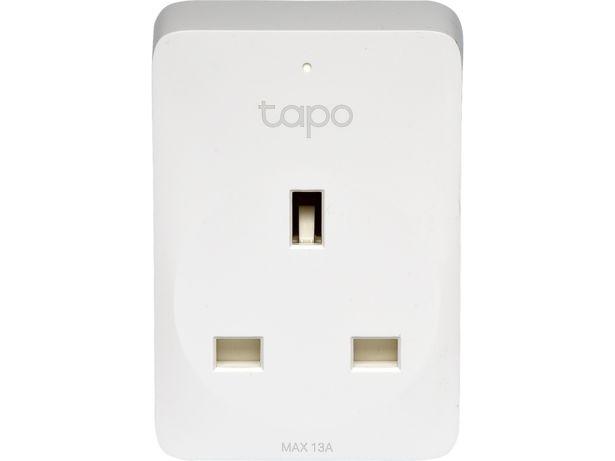TP-LINK Smart Plug
Home » TP-LINK Smart Plug

Whether you want to give your home that lived-in look while you are on vacation or are just looking for the convenience of being able to have the coffee ready when you wake up, the TP-LINK’s Smart Plug may be just what you need.The Smart Plug is a small device 2.6” wide, 3” deep and 3.9” high.Included in the box is a Technical Support pamphlet, a GNU license notice, a Quick Start Guide, and the smart plug. Setup is easy. Just install the free app on your Apple (iOS 8 and higher) or Android (4.1 and higher) phone or tablet, plug the device into an outlet, and follow the simple instructions to connect it to your Wi-Fi network. Unfortunately, the app is called “Kasa” which can be difficult to remember since that name seems to have no obvious connection TP-Link or the Smart Plug.The TP-LINK Smart Plug is 802.11 b,g, n enabled. It also worked well on my 802.11 ac network. One caveat is that it will only work on a 2.4GHz wireless network. This might be an issue for some. Yet it worked perfectly with my dual band router since it transmits and receives on 2.4GHz and on 5GHz at the same time.The true beauty of the TP-LINK Smart Plug is that once it is connected to your wireless network, it works seamlessly without the need of a hub. You can simply and easily control any connected devices with the app. You are able to give each plug a name and can also combine several plugs into a group. You can choose an icon to represent the device like lamp, heater, coffee pot, crockpot, etc. You can also take a picture of the device that will be controlled by the plug and use that as the icon.The Smart Plug also works with the Amazon Echo (Alexa). Once the device is on your network, you simply ask Alexa to “discover new devices” and she will find the new plug(s) and you will be able to control each device with your voice. When the plug was first released you had to enable a skill within the Alexa app to make it work. Now, however, they have improved the process and the skill is automatically enabled.With the TP-LINK Smart Plug you can control connected devices from anywhere you have an Internet connection with the Kasa app. You can also schedule the Smart Plug to automatically power electronics on and off as needed. This is perfect for a coffee pot that you want to turn on in the morning.As long as you set the time zone, you can have the devices turn on at dusk and off at sunrise. There is also an Away Mode that turns your lights or other devices on and off at different times to give the appearance that your home is lived in even if you are not there. You can control the time period during which the Away Mode operates. There is also a timer mode that lets you turn the device on or off after a set time period perfect for anyone who routinely leaves on the clothes iron or curling iron.The app was thoughtfully developed and easy to use. TP-LINK has advanced instructions for scheduling and using the away mode and timer. Unfortunately these instructions are hidden in the FAQs for this product. I would like to see them front and center for use by those who need them.The Smart Plug has only one outlet. If you want to control more than one device at a time you can use an extension cord or surge protector. This is perfect for controlling two lights in the same room. However, I found that this can be kind of quirky. Several extension cords and surge protectors that I tested worked perfectly the first time. However, I had to try some others several times before they worked with the Smart Plug. I cannot fault the Smart Plug for this. It is more likely the fault of the extension cord or surge protector.There are two models of this Smart Plug available: model HS100 and model HS110. Both look identical. The difference lies in the price and capabilities. The HS100 retails for $29. The HS110 is $39. The HS 110 is called a Wi-Fi Smart Plug with Energy Monitoring. It performs just as the HS100 does with one important additional feature. The HS110 tracks your device’s power consumption. It allows you to analyze a device’s real-time as well as historical power consumption. It includes weekly and monthly summaries. This makes the HS110 a valuable tool for monitoring energy use. You can purchase as many as you need or simply purchase one and move it to any device you want to monitor. I called my first HS110 “test”. It kept its network connection as I moved it from device to device. Using it I was able to tell which one of my small space heaters is more efficient.I found the TP-LINK Smart Plug quite useful. If you want to add some lights to the devices that Alexa can control, this is the easiest and cheapest way to do it. These plugs, however, give you only on-off capabilities for lights while some others like the Philips Hue setup can also give you dimming and color control.While the Smart Plugs are fairly small, in a two-outlet situation, you will not be able to use any other oversized plugs in the second wall outlet. Also, since the device plugs into the front of the outlet, it will stick out from the wall more than a regular plug.All-in-all, the TP-LINK works quite well and is a good replacement for those old-fashioned wall timers for lights. It is also a good addition for an Alexa Echo controlled-home and an inexpensive way to monitor energy usage for questionable devices.
Consumer Electronics,Power iot,smart plug



